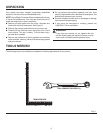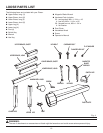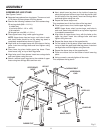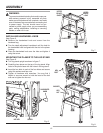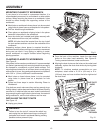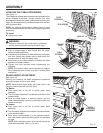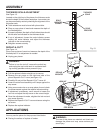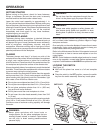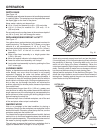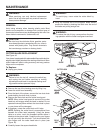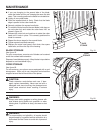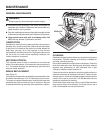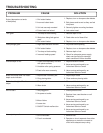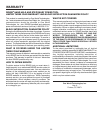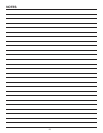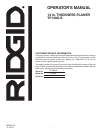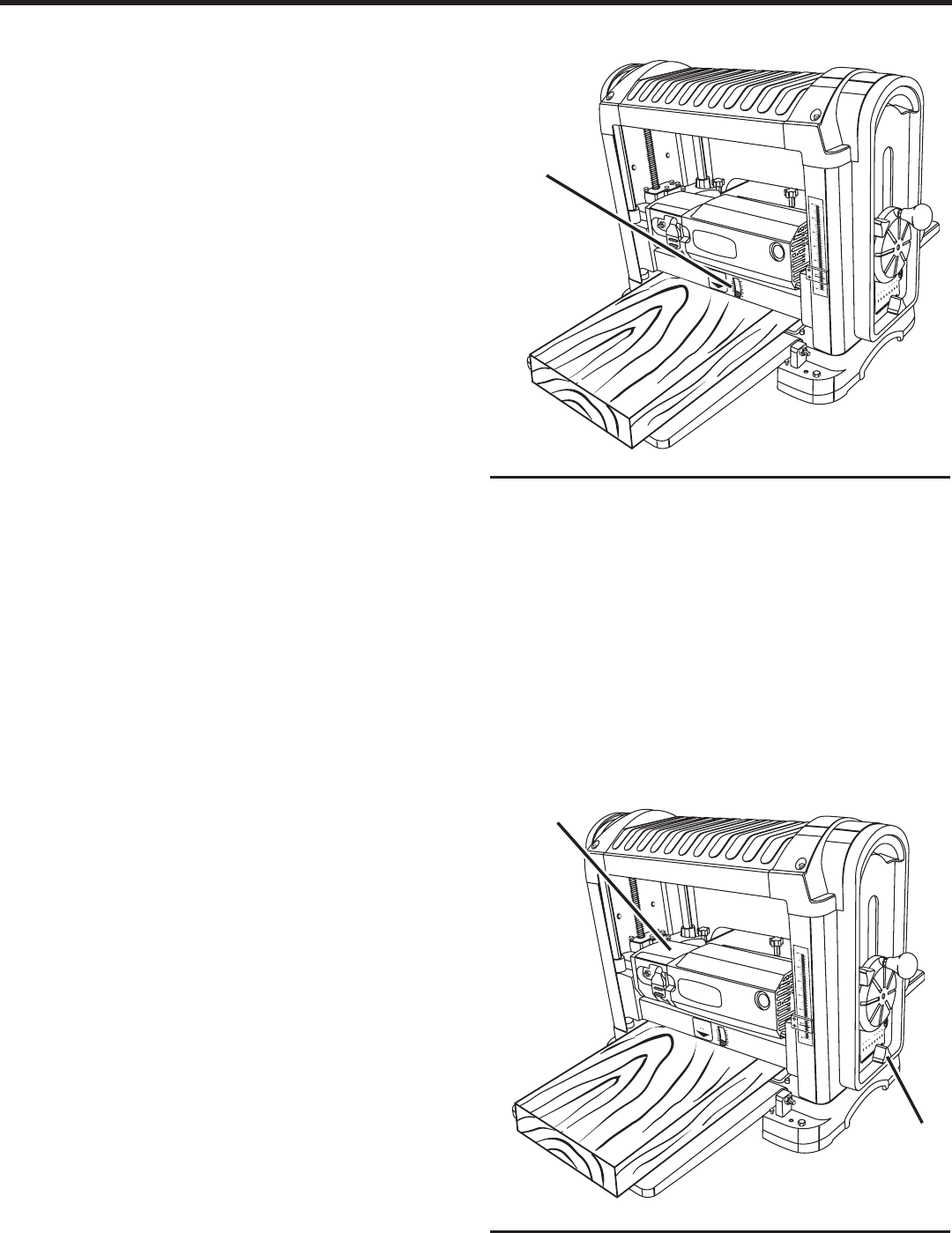
1
Repeat
Cut
A
-
-
1
1
1
1
1
3
3
2
2
"
"
4
4
4
4
8
1
1
1
3
1/8
3/32
1/16
1/32
0
2.5
2
1.5
1
.5
0
Ind
I
Cut
6
5
4
2
1
0
0
1
2
3
4
5
6
7
8
9
10
11
12
13
14
15
3
1
Repeat
Cut
A
-
-
1
1
1
1
1
3
3
2
2
"
"
4
4
4
4
8
1
1
1
3
1/8
3/32
1/16
1/32
0
2.5
2
1.5
1
.5
0
Ind
I
Cut
6
5
4
2
1
0
0
1
2
3
4
5
6
7
8
9
10
11
12
13
14
15
3
OPERATION
Fig. 17
Fig. 16
DEPTH GAGE
See Figure 16.
The depth gage indicates the amount of wood being removed
in a planing pass. The workpiece must be positioned under
the depth gage on the front of the planer.
Never make a planing cut deeper than:
1/8 in. (3 mm) for material up to 6 in. (152 mm) wide
1/16 in. (1.6 mm) for material 6 in. (152 mm) - 13 in.
(330 mm) wide
Do not continuously use the planer at the maximum depth of
cut,1/8 in. (3 mm), as it will damage the motor.
REPLANING/USING REPEAT-A-CUT™
See Figure 17.
Your planer has a replane feature using preset markers for
repetitive planing. The Repeat-A-Cut™ allows you to plane
material at a set measurement of 1/4 in. (6 mm). The
maximum depth of the replane indicator is 1-3/4 in. (44 mm).
Push Sure Cut™ to the left to unlock cutter head
assembly.
Raise cutter head assembly to a height greater than
1-3/4 in. (44 mm).
Move the replane indicator to the desired height.
Lower the cutter head assembly until it stops.
Lock cutter head assembly in place by pushing the Sure
Cut™ to the right.
AVOIDING SNIPE
Snipes, or depressions made at either end of a workpiece by
cutter blades, can occur when the board is not properly
supported. Engaging the cutter lock before planing will
minimize snipe. Although snipe may be barely noticeable, it
is important to keep the workpiece parallel and flat with the
planer table to minimize snipe. Butting workpieces end-to-
end as they are fed through the planer will minimize the
problem, especially for shorter pieces, because it provides a
more stable feed.
For workpieces longer than 48 in. (122 cm), greater care
must be taken to reduce the problem because the additional
length means more of the total weight is unsupported by the
planer table and rollers causing the shifting weight to work
against keeping the stock flat.
To remove snipe from a finished workpiece, cut off the end
of the workpiece where snipe is noticeable.
WARPED WOOD
Little or no warpage is the ideal condition for planing a
workpiece. Simply turn the workpiece over and plane it to the
desired thickness. Otherwise, plane the top flat first, turn the
workpiece and plane the bottom half.
For a board that is cupped or bowed across its width, the best
method is to rip the board lengthwise down the middle and
plane the pieces separately. This method eliminates much of
the waste in planing cupped or bowed workpieces.
The only way to remove the bow from a workpiece that is
cupped or bowed down its length is to use a jointer.
DEPTH GAGE
Avoid using severely warped wood as it can jam the planer.
If it must be used, rip it in half before planing to help minimize
the possibility of jamming. If jamming does occur, turn the
switch off and unplug the planer immediately. Raise the
cutter head assembly high enough to remove the workpiece
easily. Carefully check to make sure no damage to the tool
has occurred before making the next planing pass.
Always feed the workpiece in the direction of the grain. This
allows the cutter blades to sever the wood fibers instead of
tearing them. Feeding against the grain can also cause the
cutter blades to chip the workpiece.
CUTTER HEAD
ASSEMBLY
REPLANE
INDICATOR
17



